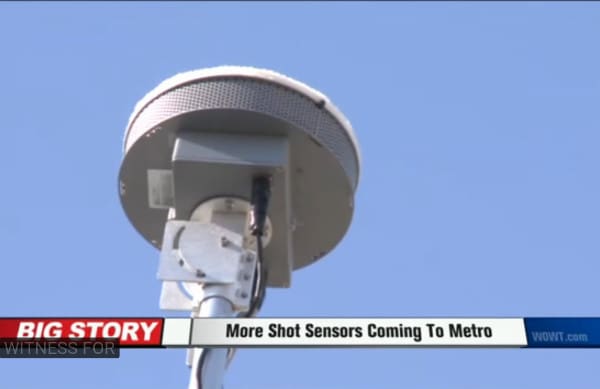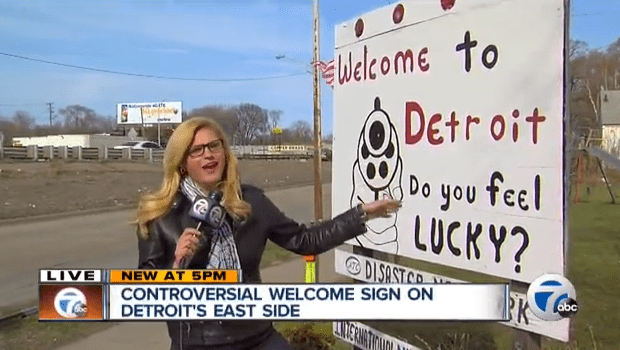“A program intended to help police officers identify where a shooting happens, get there quicker and ultimately cut down on crime has been stripped from the proposed city budget because city leaders said it’s not effective, San Antonio, Texas’ ksat.com reports. “It cost the city $270,000 to put ShotSpotters on the city’s crime-ridden east and west sides, but police Chief William McManus said the program’s results don’t match up with its hefty price tag.”
The experience in San Antonio shows the ShotSpotter system’s limitations. In the fifteen months the system was in place, the police credited four arrests to ShotSpotter. That’s arrests, not convictions. The total cost of the system was $378,000 plus $168,000 for officer overtime associated with the program. So the city spent about $136,000 per each arrest.
expressnews.com tells the tale:
The four suspects were arrested on charges of discharging a firearm, a Class A misdemeanor, the SAPD’s Sgt. Jesse Salame said. One of the suspects also was charged with possession of narcotics.
There was no known shooting victim in any of those four cases, Salame said.
It’s easy to see why Police Chief McManus pulled the plug. While some costs would be spread out over years, the overtime and maintenance costs of the system could conservatively be $75,000 a year per arrest.That would be most of the cost of a full time police officer, to make one misdemeanor arrest where no shooting victim was involved.
In Connecticut, ShotSpotter system is also under the gun. From fox61.com in 2013:
“It gives us a very, very close location as to where the shots emanated from,” said Lt. Brian Foley of the Hartford Police Department.
But that’s only when it’s working and the problem is that so far, ShotSpotter has mostly backfired. During an analysis of ShotSpotter in spring 2012, police records show that out of 60 total alerts, only six were confirmed, meaning the system was only 10 percent accurate. Nearly a year later, an interdepartmental police memo shows the system’s accuracy on 27 alerts was even lower, at just eight percent. Two of those 27 alerts were labeled as gunfire but really weren’t, including one which was just noise from a snow plow.
“Some calls you go to you don’t know if it’s a firecracker, you don’t know if it’s a gunshot, you don’t know if it’s a dump truck swinging its tailgate,” Foley said.
The New Haven Police Department purchased ShotSpotter for $374,000 in 2009 and has made two payments of $49,000 for maintenance since then, yet police admit the system has been flawed.
“It was definitely frustrating to officers and dispatch, it was taking up a lot of our resources,” said Sgt. Max Joyner.
Technological solutions to crime can be helpful, especially for politicians who want to be seen to be “doing something” about “gun violence.” But there are always criminal countermeasures. Bad guys wear gloves to stop leaving fingerprints, or masks to foil surveillance cameras. Sensors can be destroyed, etc.
While ShotSpotter can be helpful in locating crime hot spots, those locations are already well-known to the police. Truth be told, violent criminals are small in number in all communities. Spend the resources on monitoring, apprehending and convicting those known individuals, and violent crime will decrease.
©2017 by Dean Weingarten: Permission to share is granted when this notice and link are included.





Shot Spotter works 100% of the time in one situation only. That is, when it is shot directly in its sensing array, and you can deduce that a round has been fired, and can approximate the angle and relative distance from which it was fired BY THE BULLET HOLES IN IT.
I don’t deny that it would be a nice idea, I don’t deny that R&D performed by companies attempting to help Uncle Sam achieve certain capabilities needs to be recouped, and that such actual working technologies require many iterations and layers of technology to bring them to fruition. But they gotta not deny that shot spotter, in its current and previous forms, doesn’t work.
Plus, if they deploy it to Chitcago, they’ll know sooner that there were shots fired because the shot bodies of the poor install workers will be found raped and eaten near the install cite.
What I wanna know is, who in San Antone and C[un]T got the kick-backs necessary to convince someone to install it?
“Using data from Washington, DC, and Oakland, CA, we find that only 12% of gunfire incidents result in a 911 call to report gunshots, and only 2-7% of incidents result in a reported assault with a dangerous weapon.”
https://www.brookings.edu/research/the-geography-incidence-and-underreporting-of-gun-violence-new-evidence-using-shotspotter-data/
If they installed an x-ray detector at the ER entrances of the local hospitals they’d have a better chance of detecting a bullet, and they still would miss the thru-n-thrus, the ones left for the coroner, and those put thru the meat grinder that wind up in falafel. http://www.telegraph.co.uk/news/uknews/1552482/Missing-girls-body-put-into-kebab.html
““Using data from Washington, DC, and Oakland, CA, we find that only 12% of gunfire incidents result in a 911 call to report gunshots, and only 2-7% of incidents result in a reported assault with a dangerous weapon.””
There’s a reason for that.
Such calls are answered slowly, too slowly to do any good, and the people who hear the gunshots know that. When they call 911 to report shots fired, all that happens is a policeperson (or three) comes out after the fact to take a report, wasting the time of the one who made the call in the first place.
So, Shotspotter claims that this system can make the report faster (it can, if all goes right), but the fatal flaw in the whole thing is still the same: The police show up after the fact, but now must spend even more time (and money) looking for someone to interview for the report.
This is not new. Wonderful new systems come on all the time, supposed to make law enforcement more betterer. Most inner cities would like to say these new systems just don’t work, and for the same reasons: they rely on the same old police force to follow up, and they are always too late to do more than take a report.
But don’t plan on defending yourself! The Police Are There To Protect You!®
Quite impressive results, so the police chased 9 dump trucks for every one firearm discharge.
A most efficient (and unfortunately predictable) use of taxpayer resources, spend more money and resources to do less work
A Star Trek solution to a Babylon 5 problem.
First security and away team down. Send in the Captain, First Officer, Chief Medical Officer, and Engineer.
And another Red Shirt.
“In the fifteen months the system was in place, the police credited four arrests to ShotSpotter.”
Clearly, criminals in San Antonio have easy access to silencers. It’s the only explanation! /sarc
If they were mobile (vehicle born) units, they probably generated a LOT of heat, took up a LARGE amount of space and power. In Iraq, systems like this were only surpassed by Wi-Fi brain-fry ECM systems. Manufacturer says stay > 3′ away from the mast, YA, all internal occupants ~ ok, gunner in the turret? Not so much. Damn I know me and my guys got micro-wave brain.
Brotherhood of the Black Fleece. Gunners!!! Gunners AYE!!!
zap
…$75,000 a year per arrest.That would be most of the cost of a full time police officer…
Apparently you’re not familiar with public sector unions.
They could probably buy 1000 residents of those areas guns, a few boxes of ammo, and some basic gun handling classes for that much.
“But that’s only when it’s working and the problem is that so far, ShotSpotter has mostly backfired”.
We see what you did there, FoxNews.
Keep.the criminals locked up and you won’t need to listen for the shots.
But they already blew a bunch of the public’s money instead of, oh I don’t know, spending 10 minutes on the internet, right?
Figures.
Comments are closed.